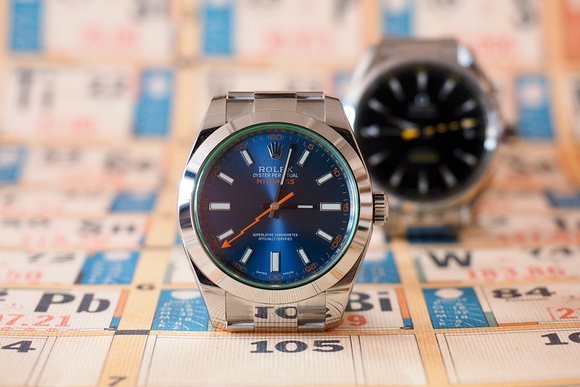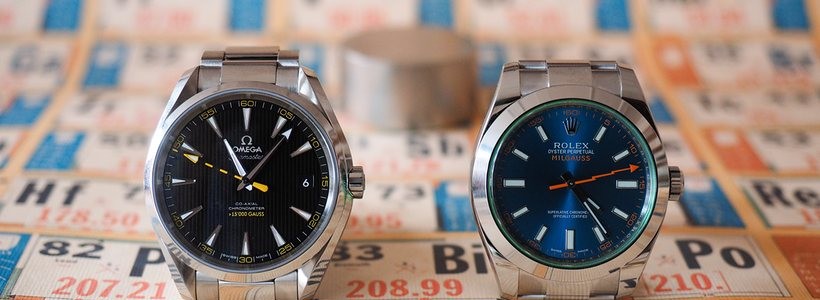
UK Replica Watches Rolex Milgauss, An Omega >15,000 Gauss, And A 4,000 Gauss Neodymium Magnet
“I will do science to it.” – Kimiko, from the web comic Dresden Codak
Modern methods and materials have made it possible to make watches capable of resisting just about any magnetic field you’re likely to encounter in real life. They also make it possible for watches to resist anything you’re going to find in unreal life, too. We’re looking at magnets, magnetism, why watch designers have put so much work into fighting magnetic fields, and what we as owners really get out of it – and we conduct a couple of little experiments of our own. Carefully.
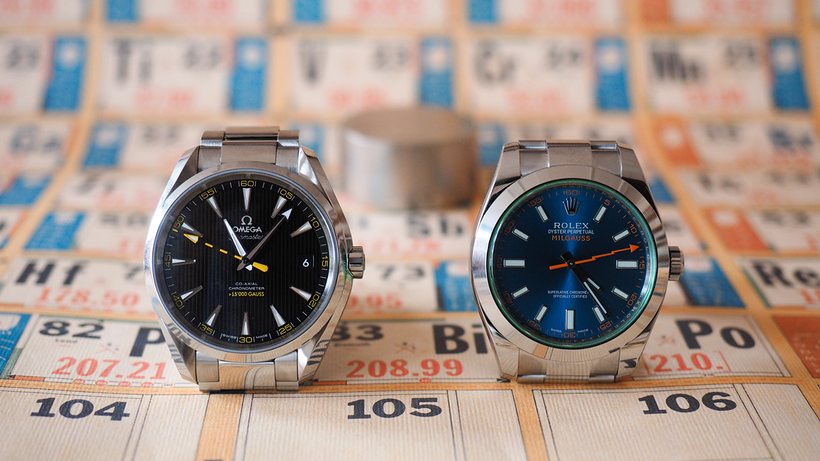
Watchmakers care about magnetism because magnetism can, at worst, make a watch useless. There are a couple of different ways this can happen. Modern Nivarox-type alloys are reasonably resistant to weak magnetic fields, but if a watch comes into direct contact with a powerful permanent magnet, especially so-called rare earth magnets (the most powerful type, which thanks to their great strength, are popular as clasps and fasteners) the balance spring can become magnetized. The coils will begin to stick to each other, which increases the tension in the spring. A magnetized watch acts as if someone’s put too strong a balance spring in it, and begins to run fast, because the balance can no longer swing through a full arc. The first time this happened to me was when I put my Speedmaster down by mistake on a cell phone case with a rare earth magnetic clasp. I knew what I’d done instantly and pulled the watch off, but it immediately started to run about 10 minutes fast per hour. A trip to the Omega boutique and a quick pass through a demagnetizer fixed things, but the incident impressed on me that while the strong magnetic fields we can run into in modern life are relatively rare, they’re also potentially a very real problem.
What Is Magnetism?
To understand antimagnetic watches, and to be able to compare them as a consumer, you have to know at least a little about what magnetism is, and how it’s measured.
Magnetism in everyday life comes from two sources: electromagnets and permanent magnets. Electromagnets are magnets in which the magnetic field is produced by moving current; permanent magnets are those which have a magnetic field on their own, without any electric current passing through them. Both can be hazardous to watches. It was thought at one time that only certain materials were affected by magnets, but we now know that all materials are affected to some degree. However, only so-called ferromagnetic materials produce fields strong enough for us to feel in everyday life. Ferromagnetic materials are those that can be magnetized; other magnetic interactions are generally too weak to be felt and require laboratory equipment to detect.
Understanding the source of magnetism is easier when you remember that a magnetic field is generated by a changing electrical field. The opposite is also true; a changing magnetic field inside a loop of wire will create a current. This relationship was discovered by Michael Faraday, in 1831 and is the principle behind electrical generators and motors.

If you remember that moving electrical fields generate magnetic fields, you can now understand ferromagnetism. The electrons present in all materials are in motion, and, as electrons are charged particles, this motion generates a magnetic field. Electrons have a property known as spin, and usually come in pairs. Since paired electrons are forbidden by the laws of physics from having the same spin (thanks to something called the Pauli Exclusion Principle) paired electrons have opposed spins, and so the magnetic fields they generate usually cancel each other out. However, some materials have unpaired electrons – including iron, which has four in its outermost electron shell – and those unpaired electrons are allowed to have the same spin, which produces a tiny magnetic field, with a specific strength and direction (a vector field, in other words).Luxury replica Rolex watches.
In ferromagnetic materials like iron, these tiny fields can be made to line up, and add up, to a field strong enough to be felt. Put a piece of iron in a strong enough field and the magnetic “domains” inside it will stay lined up even when you take the external field away – you have a permanent magnet. The most powerful permanent magnets known are so-called rare earth magnets, which can be strong enough to injure you if you’re not careful. (This is a highly simplified model of how magnetism works but it’s enough to go on with, as they say.)
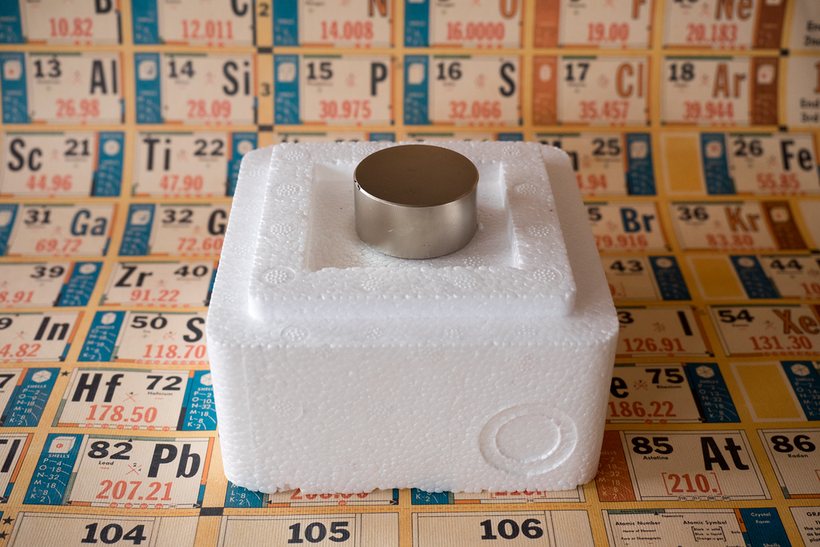
Above is a neodymium (rare earth) magnet purchased for the purposes of our informal science experiment. As it happens I didn’t check the field strength of this little beast before ordering it, and I probably should have. It’s quite large, for a neodymium magnet – far bigger than anything you’re likely to run into in a consumer product – and once I got it out of the box and found out how much force it took to get it off the door of the refrigerator (both hands, and a very firm tug) I hunted around online until I found an online neodymium magnet strength calculator (truly, everything is on the Internet). As it turns out a magnet of this size and composition has a surface field strength of over 4,000 gauss, which is a significant fraction of what you’d find in an MRI machine. It takes 90 pounds of force to pull the thing off a steel plate and if you aren’t careful handling it, especially around other ferromagnetic objects, it can move fast enough and hard enough, and connect with enough force, to tear skin or break a finger.
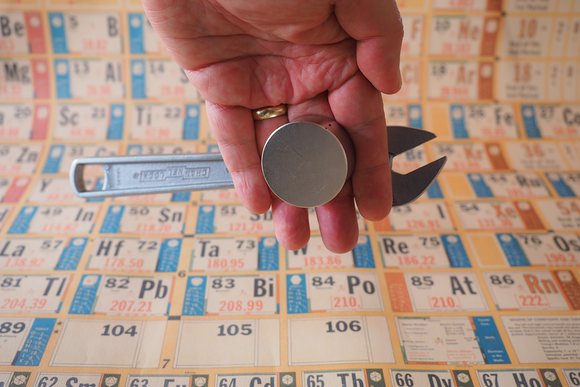
Now the reason I’m (painfully) sticking a wrench to my hand with a 4K gauss magnet is because it’s easier to understand how powerful the magnet is from a picture, than from expressing field strength in things like gauss or tesla, which are more abstract. There are actually two kinds of magnetic fields: B, and H. The so-called B field is a measure of field strength in free space, and is measured in tesla, or gauss. One tesla = 10,000 gauss; a typical refrigerator magnet is about 50 gauss, and our test magnet, at about 4,500 gauss, is nearly half a tesla, which is more than enough to fry any conventional watch. Obviously, the plain steel balance springs used in watches before the advent of Nivarox type alloys would be incredibly vulnerable to external magnetic fields, but even a watch with a standard modern Nivarox balance spring would be instantly rendered unusable by a magnet as powerful as the one we used in our test. Even with the high antimagnetic ratings of both the Milgauss and the Omega >15,000 Gauss, the idea of applying such a powerful magnet was a little alarming. It’s one thing to know your car has an air bag; it’s another thing to deliberately run it into a brick wall to find out if it works like it’s supposed to.
By the way, you may have heard resistance to magnetism in watches expressed in amperes per meter, sometimes shortened to A/m. This unit is used to express the strength of the other magnetic field, the so-called H field – as is its equivalent, the oersted. The H field is basically the strength of the B field, but including its effects inside a material on the overall field. Fortunately for those of us comparison shopping for antimagnetic watches, in air or a vacuum the B and H fields, and therefore, the gauss and the oersted, are about equal. The conversion from oersted to A/m is a little more involved but to give a concrete example, the famous IWC antimagnetic Ingenieur 500,000 A/m could resist a field of almost 7,000 oersted/gauss. A rating of 1,000 gauss resistance is equal to about 80,000 A/m.
As you can see, the B and H fields aren’t really different so much as they are the same phenomenon seen from different perspectives.
Fun fact: your brain produces a field of about one picotesla, or 0.000000000001 tesla, which is so weak you need a neat gadget called a SQUID (Subatomic Quantum Interference Detector) to pick it up.
Watch Vs. Magnet
Obviously a strong enough magnetic field will physically damage a watch with ferromagnetic parts, but watchmakers, and watch owners, are worried about slightly more subtle changes.
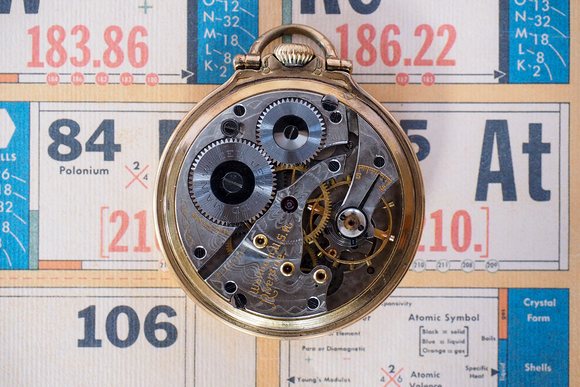
Above is an early 20th century, size 16 Waltham Riverside pocket watch with a solid balance, and Elinvar balance spring (a forerunner of Nivarox). The purpose of the balance spring is to do for the balance what gravity does for a pendulum – pull it back to a neutral position when it’s swinging, with a force that is exactly proportional to how hard the pendulum, or balance, is pushed. Anything that interferes with that is going to upset timekeeping.
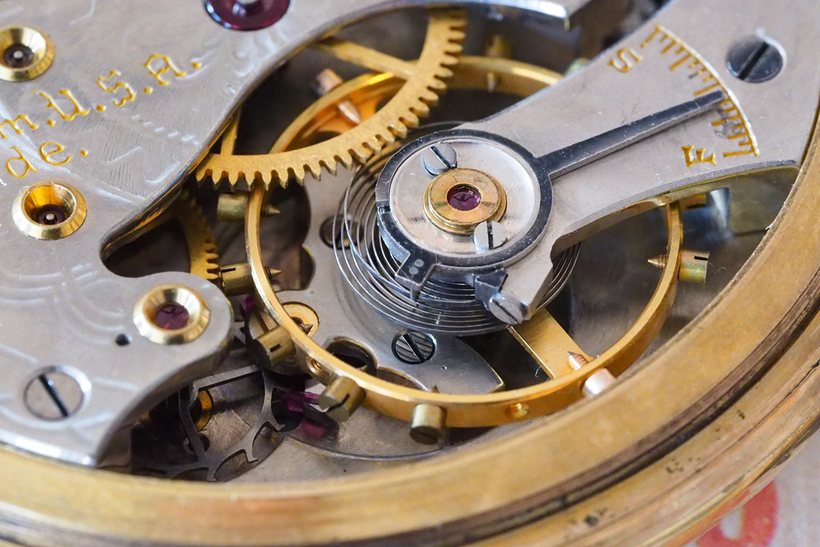
As we mentioned before, the most common effect of magnetization is for a watch to run fast. There is, however, a subtler effect. If a spring containing ferromagnetic materials (like Nivarox) is exposed to ambient magnetic fields, the gradual accumulation of magnetism in the alloy can also interfere with the temperature compensation properties of the balance spring, and it may begin to run at different rates at different temperatures. The issue was described in a 2004 story for the Horological Journal by watchmaker Gideon Levingston, who was working at the time on his “Carbontime” oscillator system, which incorporated a carbon fiber balance spring intended to address this very issue. If you’ve been following Kari Voutilainen’s work for a while you might even remember that Kari used the Carbontime oscillator in one of his watches, as PuristsPro reported via watchmaker and horological writer Curtis Thomson, in 2006.
Obviously magnetic fields can be a major problem for watches, watch owners, and watchmakers in both immediately obvious, and more subtle ways. Now let’s look at two watches built to resist this hazard.
Don’t Try This At Home
For the purposes of the test, the magnet was left on its styrofoam lower box and to prevent damage to both the magnet and the watch, a folded cloth was placed in between the two. Several earlier experiments with the magnet and ferromagnetic materials (by “experiments” I mean “randomly choosing heavy iron or steel objects to pick up”) had produced scratched objects, a slightly chipped magnet, and a sense of the need for an abundance of caution when handling the HODINKEE Demon Core. The results were interesting to say the least.
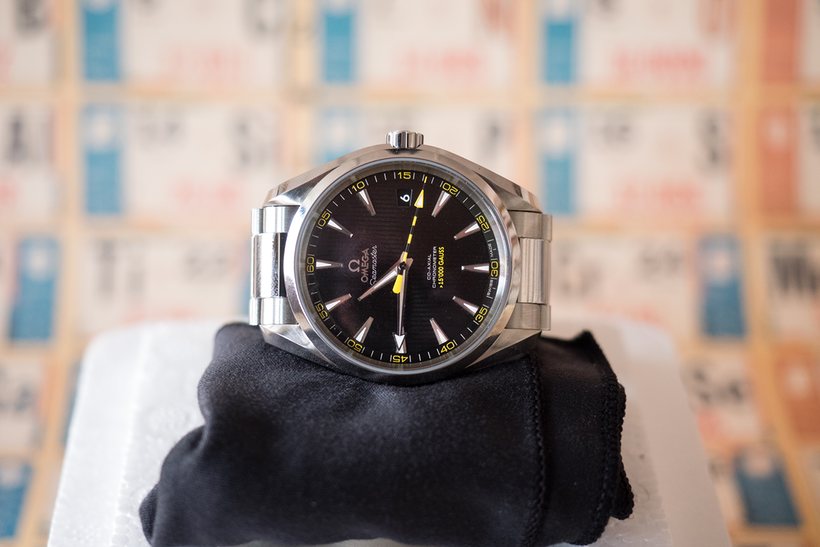
The first watch we tried was the Omega >15,000 Gauss. The watch was placed – extremely carefully – on the magnet and there was no visible effect at all. Allowed to run for 24 hours after exposure to the magnet, the watch showed no visible deviation on its rate, either. The solution used by Omega for this watch is the use of non-ferromagnetic materials for all critical components, including the balance, escape wheel, lever, and balance spring. Interestingly enough the entire watch, which is cased in stainless steel, showed very little susceptibility to the magnet overall – the force exerted certain wasn’t strong enough to pick the watch up, which was very surprising.
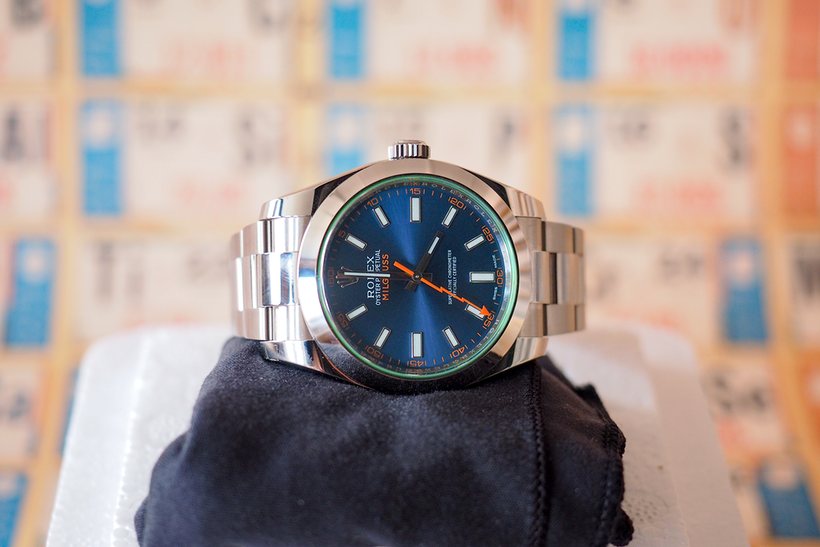
Second up was the Milgauss. Now, this is the one that actually did make me nervous. Milgauss doesn’t mean “resistant to a 4,000 gauss permanent neodymium magnet.” It means just what it says: 1,000 gauss. Much to my surprise, and considerable relief, the visible effect on the watch was zero, and in fact, just as with the Omega, there was relatively little attractive force between the case and the bracelet. We allowed the Milgauss to run for 24 hours as well, and just as with the Omega, rate deviation, if there was any, wasn’t visible.
Conclusions And Analysis
Several interesting things came out of this little test. First of all, both of these watches apparently successfully shrugged off exposure to a magnetic field far in excess of anything you are likely to encounter in real life, at least unless you are the sort of person who likes to order extremely powerful rare earth magnets and stick watches to them.
Secondly, apparently both watches are using so-called austenitic – and therefore, largely amagnetic – stainless steels. As it turns out, both 316L (presumed for the Omega) and 904L (confirmed for the Rolex) are steels in which, when they cool, the iron crystals are in a non-ferromagnetic form. Even a magnet as strong as this one produced only a minimal attraction. One always imagines a graphically terrifying result in a scenario where you’re in an MRI machine wearing a cheap replica Rolex watches, and someone switches it on, but it actually might be a lot less dramatic than many of us thought.
The third interesting point is that there was no discernible difference at all between results from the Milgauss and from the Omega. This seems surprising at first, but remember, the first 1956 Milgauss had a conventional steel lever and balance spring in its movement (caliber 1080) and achieved its high level of resistance through the use of a soft iron casing. The latest version of the Milgauss has a non-ferromagnetic Parachrom balance spring and also uses non-ferromagnetic material for the escape wheel and lever, and it stands to reason that its resistance to magnetism should exceed 1000 gauss handily with these enhancements. As a matter of fact, the use of a niobium-zirconium alloy and non-ferromagnetic escapement components was the strategy used by IWC in its Ingenieur 500,000 A/m, which is equal to nearly 7,000 gauss as we’ve seen.
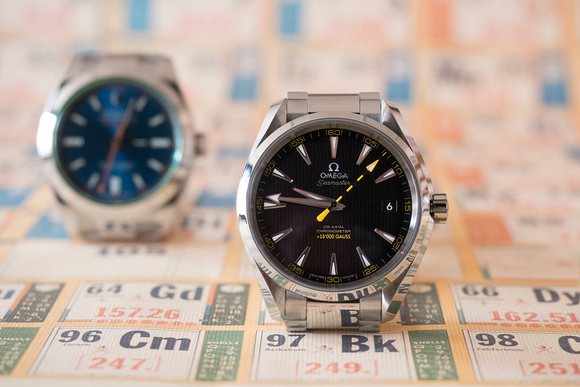
Rolex doesn’t specify the material used for the inner shielding on the Milgauss, but it’s reasonable to assume it’s a type of nickel-iron mu-metal. Mu metals alloys work by providing a preferred pathway for magnetic field lines, which flow around the movement through the enclosure, rather than through the steel parts of the movement itself. (The term “mu-metal” is derived from the Greek letter mu, which is the symbol for magnetic permeability; mu-metals are highly permeable to magnetic fields.) By the way, you may have heard the term, “soft iron inner case.” While pure iron is indeed relatively soft compared to steels, the term here means “soft magnetically.” A hard magnetic material will stay magnetized even after an external field is removed; a soft magnetic material will conduct magnetic field lines but will not stay magnetized (which obviously is desirable when you’re building a shield around a watch).
You also often hear magnetic shields in watches referred to as Faraday cages; this isn’t strictly correct. Faraday cages can be either mesh or solid enclosures and are for shielding against electrical fields. You can make a Faraday enclosure out of copper, or aluminum, but these materials won’t protect against magnetic fields. (There is some crossover, electromagnetism being what it is – Faraday enclosures can protect against radio frequency induced magnetic fields if the frequency is above about 100 kilohertz.)
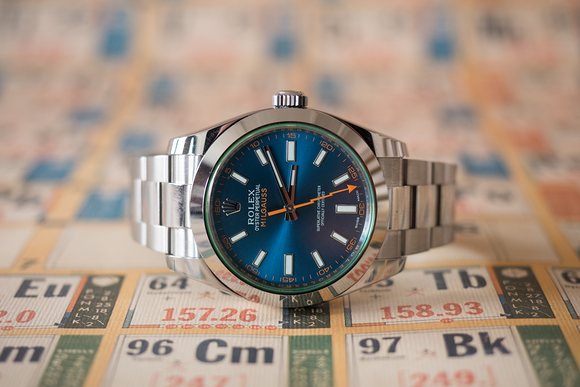
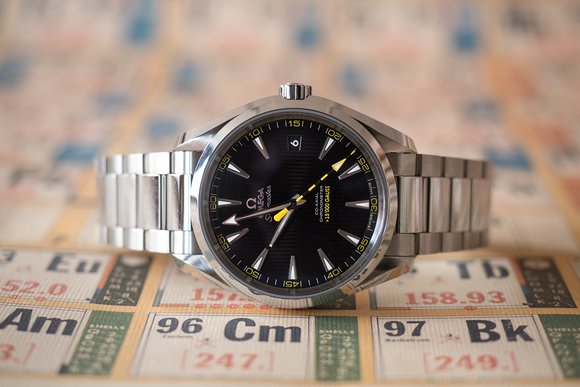
For consumers, the two $65,ooo questions are, which watch is better, and secondly, should I care about protection from magnetism as a watch owner?
I think there are definitely some consumer benefits. You might think that the major difference between Omega and Rolex as far as resistance to magnetism goes, is that Omega is rolling its amagnetic movement technology out across a much wider product line than fake Rolex watches online. However, it bears remembering that the watch part most vulnerable to magnetism is the balance spring – and the Rolex Parachrom is made of an amagnetic material. To objectively test the technical superiority of these two watches would require magnetic fields far more powerful than anything you’re ever going to encounter in real life, and such a test would be conspicuously outside the realm of relevance.
Everyone is going to have their favorite among these two watches but choosing one over the other requires balancing a number of technical questions against preferences in heritage, and style, that are highly personal. Personally I find the lightning bolt seconds hand of the Milgauss rather irresistible, but that’s me (it reminds me of Reddy Kilowatt, the anthropomorphic electrical current character used as a utilities spokesman when I was a kid, and if that doesn’t date me I don’t know what does). At the very least, I came away from this experiment pretty convinced that both watches will make magnetic field pollution irrelevant to their respective owners, and that the deciding factor may well be less to do with resistance to magnetism, and more to do with whether or not you want a date window. Replica Rolex Watches For Sale Online.
